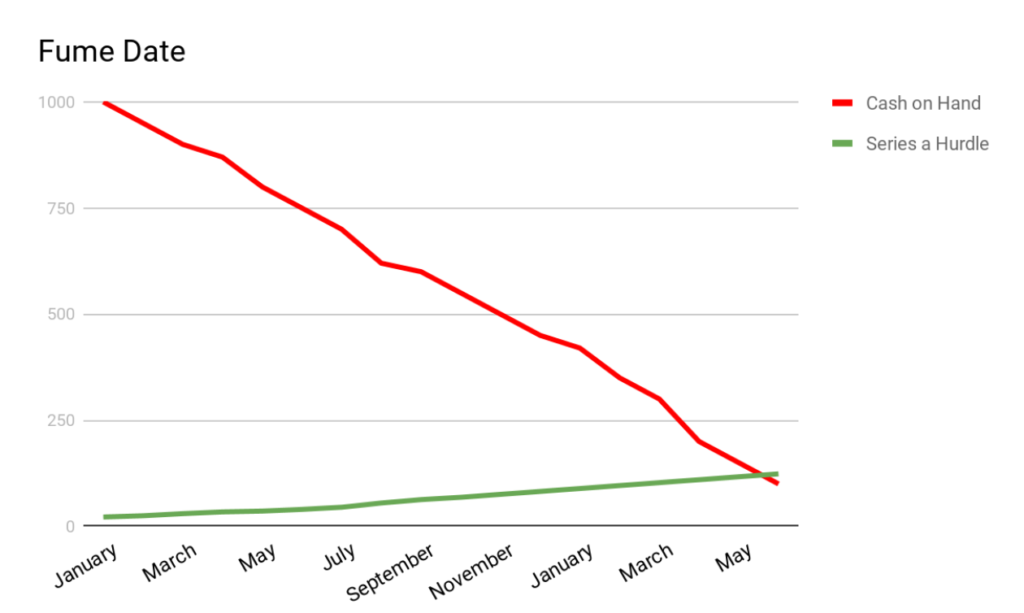Home// Articles// Fundraising// How To: Build a Series A Budget
How To: Build a Series A Budget
 Russ Wilcox
CEO at Trellis Air
Russ Wilcox
CEO at Trellis Air
So you've raised your Seed. Congratulations!
While it may seem like you’re swimming in cash now, if you’re building a venture scale business, at some point, likely within the next 12-18 months, you will need more money.
As the Seed period unfolds, start every month by looking at your budget and projected cash balances, and count how many months you have left before your fume date (the day you would have to shut down if you do not raise more cash).
Start every month by looking at your budget and projected cash balances
This is so important. At Pillar, we urge CEOs to announce the cash balance and months of runway at the beginning of every Board update, call, or meeting.
Our rule of thumb is that you need 6 months to run the Series A process.
So every month, you should be projecting the date when the company will hit its Series A hurdle metric and comparing that to see if you will get there at least 6 months before the fume date.

If all goes to plan, it’s time to get started on your Series A budget.
It is pointless to raise capital unless you know what to do with it. Begin by developing a plan and a budget for how you would spend Series A funds.
The typical Series A round recently is in the range of $7 to 18 million. That’s a big range. How much do you need?
Develop a plan and a budget for
how you would spend your Series A funds.
Your plan for Series A should reflect a transition in company focus. Whereas the company’s goal during Seed is to achieve product-market fit; the company’s goal after you close Series A will shift to commercialization for the next 12-18 months. It is mostly about sales and operations, resulting in clear signs of revenue growth.
Your plan for Series A should reflect a transition in company focus towards commercialization
You will drive that company-wide transformation by hiring new department leaders. You probably already have a VP of Engineering who led the product development; now you will hire talented leaders to run marketing, sales or customer acquisition, customer success and operations, and perhaps finance.
You will ideally be hiring proven department VPs who have already helped companies grow from $1 to $10 million, exactly what you hope to do over the next few years.
Although you might hire a few engineering heads, the purpose of Series A is generally NOT to add a second product. Leave that for Series B.
Many CEOs wonder how aggressive their sales projections should be. Any near-term sales targets you share before you close Series A should be quite low, so that you can be certain you will beat your numbers and deliver purely good news during the raise. The sales plan for after Series A closes should begin with six months of cautiously rising numbers you feel 90% likely to hit, and beyond that, your sales projections for fundraising all the way out for the next 5 years should be based on the assumption that all goes 100% according to plan.
Paint an image of the business you will build if everything goes exactly as you intend.
What? Yes! Show investors what you hope happens. Investors are adept at imagining how the business can stumble and they will immediately apply a mental discount to your year 2-5 figures. No point in your applying your own risk discount on top of theirs.
Fundraising is not a time to be bashful! Paint an image of the glorious business you will build if everything goes exactly as you intend.
Double-check that your vision of the thriving business will lead to a unicorn valuation e.g. sales over $100 million. If your opportunity is smaller, that is fine, but you better skip the Series A VCs. They only want to see unicorn-scale ideas.
Showing the upside does not mean inventing fantasy numbers. You must be plausibly aggressive. It takes a lot of homework to develop a plan that is rational. You have to show investors how the numbers are achievable.
It takes a lot of homework to develop a plan that is rational. You have to show investors how the numbers are achievable.
Create a detailed model underpinning each top-line number. For example: to hit the revenue figures, how many customers at what ASP, what sales cycle lead time and how many sales reps needed at what quotas (or how many leads or hits needed and how much advertising). What percent market penetration does that require? Exactly how many heads in each department month by month, and the salary for each position, and the number of heads you would need to hire. Develop a roadmap for product development and new feature release.
Another decision is how much cash to assume will be generated by future revenue to fund future expenses. Generally, you should not rely on profits from revenue to create free cash flow for your growing start-up during Series A! Growing companies generally do not generate free cash from sales – too much cash is consumed for working capital like inventory and receivables; and you will likely not immediately hit your cost goals right out of the gate. So, for the moment, zero out any margin contribution from sales. As you DO earn profits, you will be ahead of plan on cash and this will extend your runway.
If you don’t personally enjoy spreadsheet work, hire a part-time CFO to help you model out these scenarios, and circulate them to your Board for comment. Or, take a look at the Pillar Financial Model template here.
Once you know the amount you ideally want, let’s say $12 million, cut it down by 25% and reconstruct your baseline plan around raising 25% less, e.g. $9 million. Start by assuming the smaller raise because working with less cash is a good discipline that will force you to set priorities more carefully. If your funding efforts are going well, there will be excess demand to invest and you can walk the round size up later. If you are not doing well and cash is hard to find, you will be glad you set expectations a bit lower.
Now, start working on that spreadsheet!


